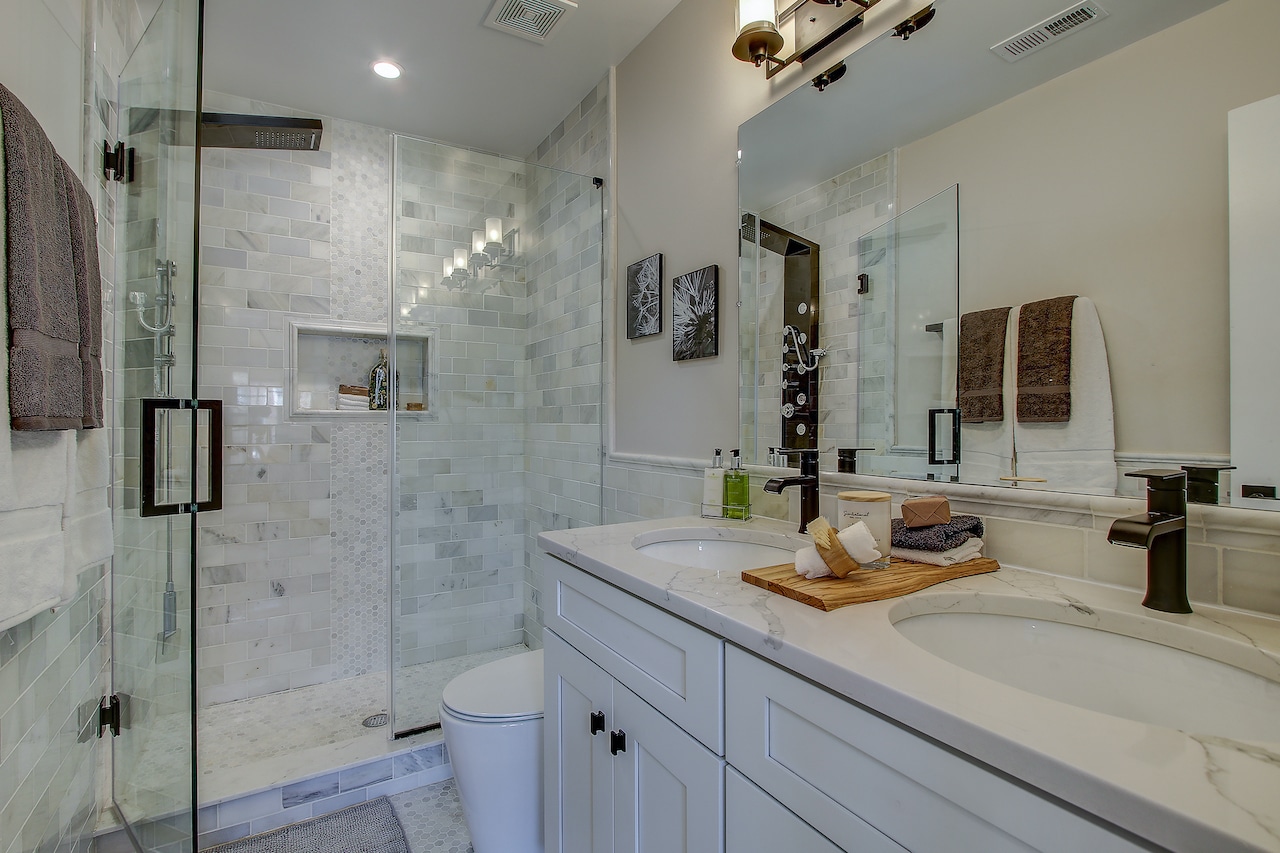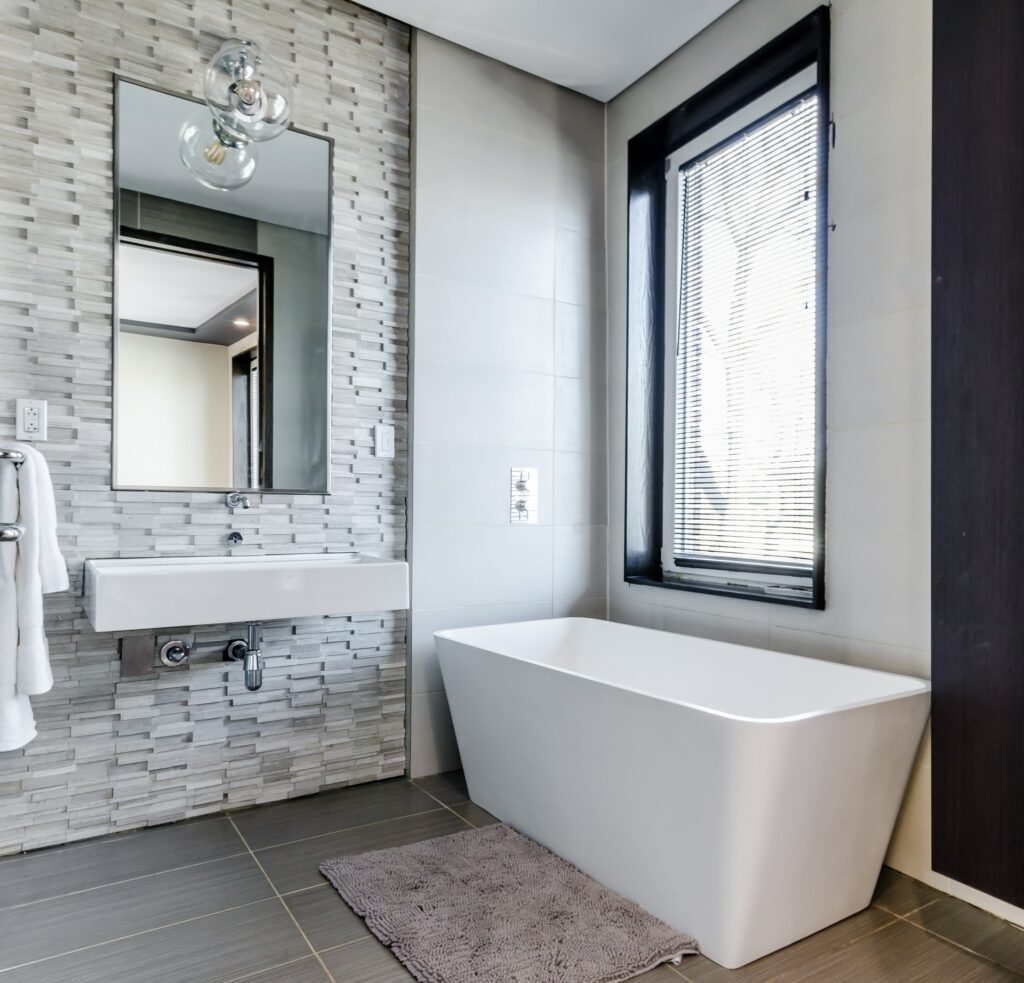
Which Are The Best Bathroom Wall Options For Your Remodel?
Are you remodeling your bathroom and looking for something a bit more unique than the standard bathroom wall options?
Bathroom walls must be waterproof, attractive, and simple to clean. If you’re thinking about the best bathroom wall options, don’t decide until you explore all the alternatives. You should read further if you’re planning to spruce up your bathroom walls but aren’t sure which style is the right one for your bathroom remodel.
Ceramic and Porcelain
Ceramic and porcelain tiles have a water-resistant, long-lasting surface, and homeowners frequently use them to achieve a high-end appeal. The most difficult aspect of selecting from such a wide range of styles and patterns is narrowing down the best bathroom wall options.
Ceramic is typically less expensive than porcelain, which is thicker, more water-resistant, and more long-lasting. Ceramic and porcelain bathroom wall tiles are designed to last, with a typical lifespan of a few decades. However, they’re more prone to become outdated before degrading.
This type of tile is moisture and stain resistant to a considerable extent. You can use grout between the tiles to create a simple watertight seal to clean and maintain if it discolors through the years. Grout attracts bacteria, so clean it up and ensure that your bathroom has adequate ventilation to remove excess dampness.
Acrylic wall sheeting is far more difficult to set up than tiles. Tiling is a tricky process that requires a lot of effort to get the bathroom tile right. While mastering the art of obtaining a beautifully flat surface takes some practice, patient DIYers can complete most basic tiling projects.
Glass
Over the last decade or so, glass tiles have become incredibly popular. There is a multitude of the best bathroom wall options to make your space spring to life and several colors, styles, and patterns to choose from. Glass also fits perfectly in shower enclosures.
Since glass absorbs light, it creates the illusion of a larger shower wall, which is ideal for smaller bathrooms. Glass tiles have an intriguing texture that adds depth and color.
Glass tiles are a bit more difficult to install. Since glass is more fragile than ceramics or acrylic, it’s usually best to professionally install it if there’s going to be a lot of cutting during the bathroom remodeling process. If you’re looking for a more affordable shower wall alternative, incorporating some select glass tiles into your porcelain or ceramic tiles for an interesting feature is an excellent pick.
Glass is simple to clean, requiring just a drop of glass cleaner and a clean microfiber, allowing you to keep your wall tiles looking fresh for long. On the other hand, it does not mask soap residue well, so it’s a blessing that it’s easy to maintain.
Stone
Stone tiles are a product of the earth’s abundance, and they look great in bathrooms, whether contemporary or classic. Slate, marble, travertine, onyx, and granite are only a few of the stone tiles available in the market.
Although stone tiles don’t have the consistency of ceramic tiles, that’s part of the appeal–each one is unique and adds a touch of elegance to your walls.
Stone tiles add depth and natural pigment, and color tones. Travertine, in general, is bumpy to the fingertips, giving your bathroom wall a touch of luxury and textural appeal.
Since natural stone is far more porous than most kinds of wall coverings, you must seal it to keep dirt out of the grain. You must reapply the sealant yearly–every two years is normal. It means stone takes a little more upkeep than most of our best bathroom wall options.
Acrylic and Fiberglass
It can consume a lot of time while remodeling your bathroom to put up wall tiles. You’re constantly cutting tiles and squeezing them into confined quarters, including pipes and cramped corners. Besides, there’s still the grouting to consider.
Prefabricated acrylic and fiberglass panels are a more efficient and clear way to waterproof your shower wall. They come in a single sheet that attaches to the wall, and if you’re looking for a low-cost shower wall alternative, these sheets add a trendy aesthetic for a low price effortlessly.
The complete sheet adheres to the wall in one step, allowing only a heavy-duty installation glue. It’s a lot easier than tiling! However, since this is most likely a two-person task, if you’re a single tiler, you will need help.
Shower pans or bathtubs, as well as waterproof corner seals, are available in multi-part sets. They’re also available as single wall sets that don’t include the shower pan, bathtub, or doors. These prefab wall panels are easy to install, and anyone with a basic understanding of DIY will be able to do it.
Several best bathroom wall options are available, varying from simple white in glossy or matte (the most popular) to textured, natural stone effects. The sheets are also available in different bold colors and designs, so look around so that you can make a big statement.
While fiberglass and acrylic appear to be nearly identical, there are a few variations to consider when choosing a shower wall. Acrylic has a high-gloss finish and is more resistant to scratches and cracks than fiberglass.
Fiberglass is the less expensive of the two choices. With proper care, it can last for many years and develop a desirable patina.
How to Maintain Your Bathroom Wall?
Having to clean a sheet shower wall is quick, as there are few nooks for mold to hide. However, it’s also necessary to pay attention to the edges and corners, as mold can still grow there.
The most significant disadvantage of using wall sheets during a bathroom remodel is that they don’t last as long as traditional wall tiles. They are more sensitive to staining, scratching and often age faster. While you can fix gaps and cracks, they are unlikely to be completely unnoticeable.
On the other hand, shower wall sheets are a great option if you’re looking for something inexpensive and aesthetic.



